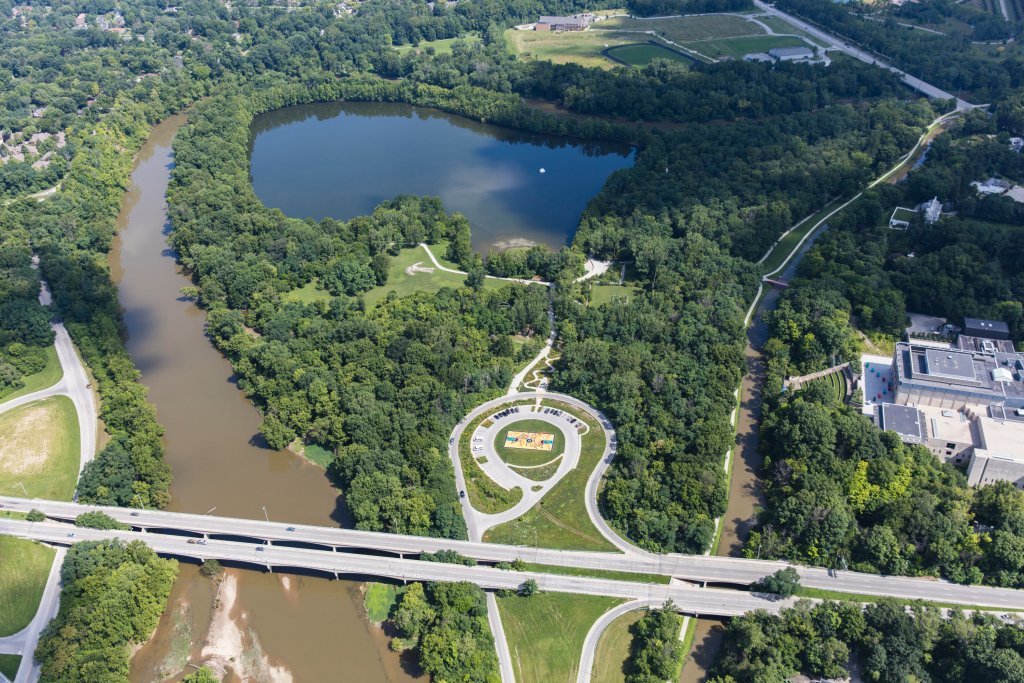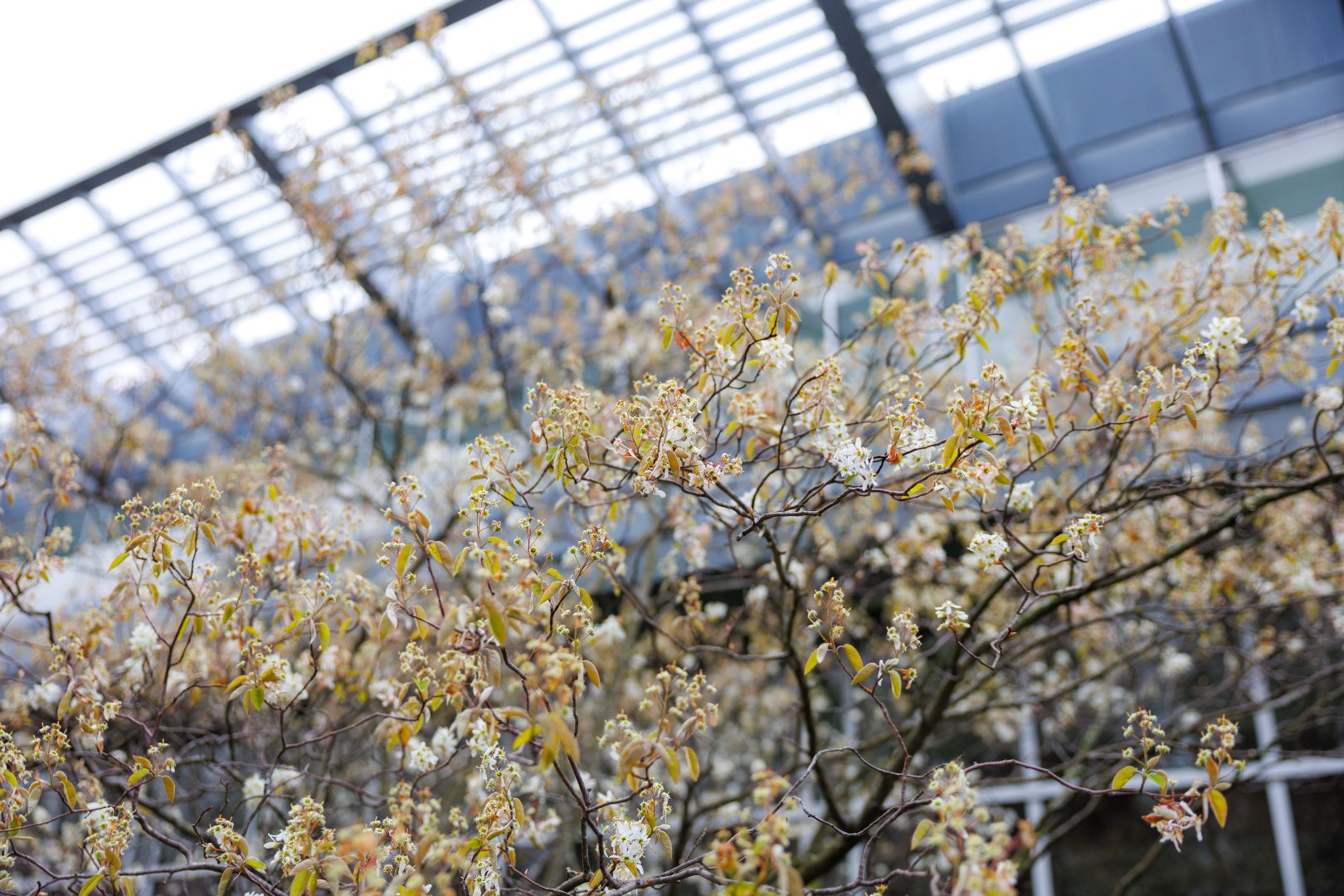Horticulture: The Newfields’ Horticulture division follows a number of sustainable practices, including:
- Landscape design using layered plantings of trees, shrubs, perennials, and groundcovers that provide year-round interest and cover
- Reduction of horticulture waste by chipping woody material and composting leaves to reuse on campus
- Utilization of organic methods in the orchard
- Renovation of The Elder Greenhouse to improve heating, cooling, and other operational efficiencies
- Implementation of Integrated Pest Management (IPM) to identify and target specific pests and plants for pest treatment, reducing harm to beneficial insects
- Deployment of biological pest control (as part of IPM) in The Elder Greenhouse to significantly reduce the use of chemical pesticides.
- Application of a higher percentage of organic fertilizers on turf and utilization of potting medium with mycorrhizae (fungal root) to reduce the use of chemical fertilizers.
- Maintenance of our campus canopy cover by protecting our canopy of trees, our biggest asset in The Garden, using several methods including root invigoration (using high pressured air to loosen compacted soil allowing for better water uptake and root expansion), lightning protection and cable installation(to reduce wind and storm damage), selective and careful pruning, and systemic pest treatments for certain trees.
- Membership in the Center for Plant Conservation to promote the conservation of rare and endangered plant species.

Natural Resources: The Virginia B. Fairbanks Art & Nature Park is one of the country's largest sculpture parks. Opened in 2010 with a focus on both art and nature, Fairbanks Park preserves nearly 100 acres of green space in Indianapolis for public enjoyment and wildlife habitat. The site of the park is located along two waterways, making it a key stop for wildlife traveling along the corridor. The park land has a history of industrial land use prior to Newfields’ ownership, including row-crop agriculture and operation as a gravel pit mine and dumping site, which devastated soils and altered the water table leaving it subject to an inundation of invasive plant species which do not sustain wildlife.
During the planning and implementation of the park, Newfields collaborated with architect Marlon Blackwell and landscape architect Edward L. Blake to transform the area sustainably. The Horticulture team at the time removed invasive species and integrated native plants into the landscape, reclaiming the space into woodlands, wetlands, and a 35-acre lake which can sustain native flora and fauna. The park is now maintained and operated as its own division of natural resources specialists.
In addition to the trails within Fairbanks Park, it is located along the White River and Central Canal Towpath, a 5-mile pedestrian and bike path which connects on either end to a system of bike paths leading downtown and to suburbs of Indianapolis. This makes the park an ideal stop for hikers, cyclists, and water recreationists. Learn more about greening efforts in Fairbanks Park.

Invasive Species Removal: Newfields is dedicated to the restoration and reclamation of previously degraded sites to areas of high-quality habitat in support of wildlife. We do this partly by removing invasive plants across campus. Since 2005, our teams have worked alongside dedicated volunteers and volunteer groups to remove more than 70 acres of honeysuckle, wintercreeper, and other invasive species. We have planted tens of thousands of native plants to reestablish Indiana native flora, beginning the process of restoring balance to the natural systems and improving the health of the White River for everyone.
Removing invasive plant species improves soil health, promotes biodiversity and species conservation, and conserves water. This makes the environment healthier over time, builds climate resilience through carbon capture, and provides ecosystem services which keep people healthy and safe.

Litter Removal: While we regularly remove litter from our 152-acre campus, we also focus outside of our property to help keep the city clean and free of debris. We are a proud participant in Keep Indianapolis Beautiful’s Adopt-a-Block program to remove litter from Michigan Road and 38th Street, along the border of our campus. We also regularly clean up the bank of the White River as it wraps around Fairbanks Park.
In 2024, we hosted our first annual White River Clean-up event in partnership with Frank’s Livery and Friends of the White River. We worked together to clean trash out of the White River between Newfields and the Parks Alliance headquarters at 30th Street.
Approximately 73 acres of Amur honeysuckle has been removed across our campus.





